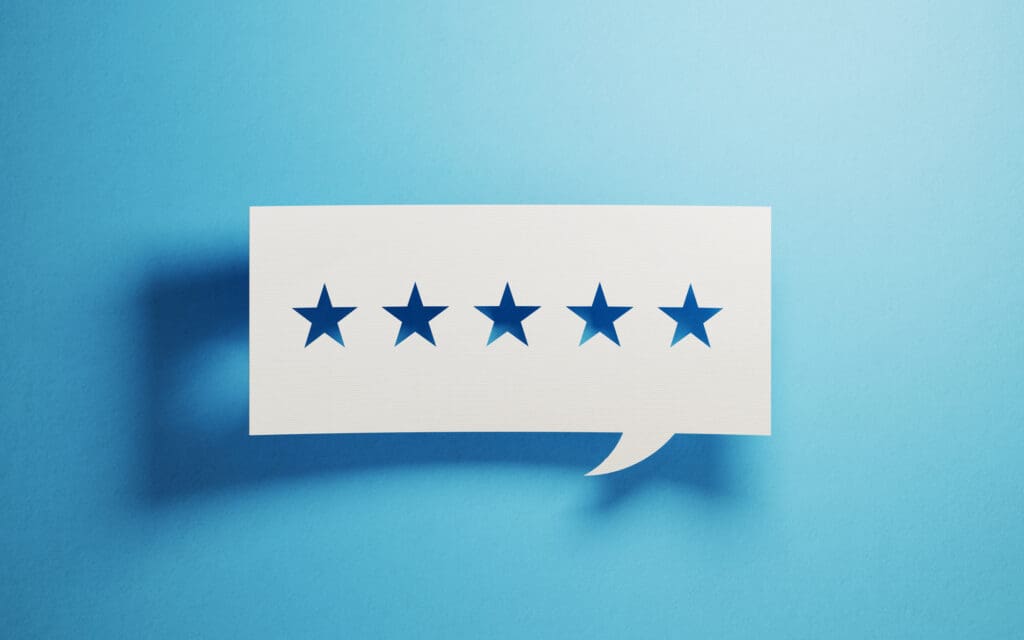Building Relationships with Your Customer’s

B2B is a misnomer. Sure, you’re a business selling to another business — but it’s crucial not to lose sight of the fact that you’re selling to a person. At each end of every B2B transaction is a human being. Yes, they’re keeping the goals of their business or department in mind when they do their research, but they’re also just like any other customer — they want to feel heard, they want to know that you can help them, they want to feel respected, and so on.
The other thing to keep in mind is that B2B decisions are not made lightly. There’s little margin for error. The wrong B2B purchase isn’t like returning a pair of shoes that don’t fit. It might involve months of research, tens of thousands of dollars spent, and hundreds of hours rolling out software on multiple computers. If it doesn’t work out, it can have immediate and substantial negative consequences for the business.
What that means is that B2B buyers take longer to make a purchasing decision. This is both good and bad for you. On the one hand, it gives you a chance to build a relationship with your B2B customers. On the other hand, they’ll expect you to maintain that relationship after the purchase is made.
Why B2B Relationships are So Important
B2B International reports that a typical business loses 45 to 50 percent of their customers every five years. That’s an annoyance for a typical B2C business, but it can be a death knell for B2B companies, who rely on fewer, larger clients and longer-term contracts to stay afloat. Losing a few customers can be the difference between survival and going under.
Driving Retention and Reducing Churn
For a lot of B2C businesses, customers are unpredictable. If you run a grocery store, your customers will buy at unpredictable times and in unpredictable amounts — they might suddenly leave and never come back if they find better produce across town or they move.
In the B2B world, you often operate with contracts spanning several months, or even years, and hundreds of thousands of dollars. You’re budgeting for revenue that won’t even come in for another two years, because that’s how far out your contracts reach. If you lose one big customer, the whole system could fall apart.
That’s why keeping the customers satisfied — and continuously renewing — is so important. There are fewer potential customers out there, so you can’t afford to lose anyone. Ensuring retention and reducing churn will give you a predictable stream of revenue, allowing you to invest in expansion, personnel, or other assets that you need to grow.
Encouraging Word-of-Mouth Marketing
The best marketing is the marketing you don’t even do for yourself — when your customers are so satisfied with your work that they convince their peers to sign up as well. When a person convinces a friend to buy the same pair of shoes, that’s a nice bonus for a company. When one CIO convinces another to sign up with your company, it could mean a new customer with a lifetime value in the millions of dollars.
How To Build Relationships With Your Customers
Like any interpersonal relationship, a business relationship takes time, honesty, and open communication about each others’ goals. We can’t help you fast-forward to the point where your customers love and trust you, but we can give you a few pointers on how to get there.
Share Your Info
Your customer success and support teams often exist in semi-isolation, answering questions and solving problems without communicating with other departments. That’s a mistake. It’s in the best interests of everyone in the company to know what your customers like, what they don’t, and what they struggle with.
Maybe a lot of customers have trouble with a specific feature on the website — they can’t find a certain feature, for example. There’s no analytics data that will tell you what you’re customers aren’t clicking, so the web dev team doesn’t know about the problem, but the customer support team hears about it at least once a day. If they let the dev team know about the problem, it can be remedied. Not only will that keep more customers happy, but it’ll save the support team time on answering that particular concern.
Keep an Eye on Signs of Churn
As your business gains and retains customers, you’ll lose customers to churn. It’s unfortunate, but you can’t help losing customers here and there. When you do, go back and look at their behavior, product usage, and the particular support issues that they were dealing with before they canceled their accounts.
What you’re looking for is a pattern. Hopefully, you’ll start to notice things in common in the way that past churned customers interacted with your company. That way, when you see the same behavior or warning signs in existing customers, you’ll be able to reach out and address them.
Talk to the Customers Who Aren’t Talking
You may have the best support team in the world, but they’re reactive. They can’t help customers who don’t reach out to them. And according to some sources, as many as 96 percent of unhappy customers don’t complain — they just leave.
If your customers aren’t saying anything negative, but aren’t saying anything positive either, reach out to them to make sure that they’re getting everything they need out of your product or service. Look for signs of dwindling usage, failure to onboard, or other indicators that they’re not actually adopting.
Social media can be a huge help with this. Monitor your own accounts and set up alerts for your company name. If you find negative sentiments about your company, contact them directly — and not in a copied-and-pasted, robotic way. Remember, people on social media are people, not companies. They expect to be treated with respect and courtesy.
For an example of what not to do, consider Snapchat. In July of 2018, Snapchat users were experiencing issues with the app, so they reached out to the company on Twitter. One user noticed that no matter what he said, he received the same response. He quickly deduced that Snapchat was using a keyword bot to send a canned response to anyone who tweeted at them with the words “lost” and “streak.”
It didn’t go over well. Customers don’t like feeling ignored or blown off. B2B businesses have even less of an excuse — unlike an app like Snapchat, there are very few b2b companies with millions of clients, so it’s much easier to address concerns individually.
The Bottom Line
Customers have more choice now than they ever have. To help them make decisions, they’re consulting other customers — through reviews, case studies, and direct recommendations. What that means is that keeping your existing customers happy, satisfied, and successful is one of the most important goals of any business.
To do that, you can’t simply think of customers as interchangeable data points or contracts. You need to put the time in to build a relationship with each of them, learning why they do what they do and what’s most important to them. It’s a time-consuming effort, to be sure, but it’s worth it.





